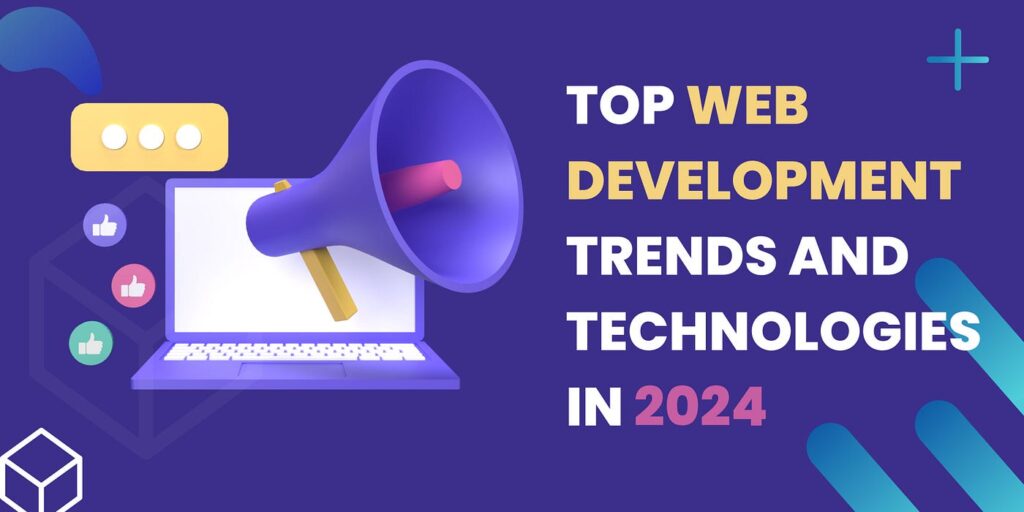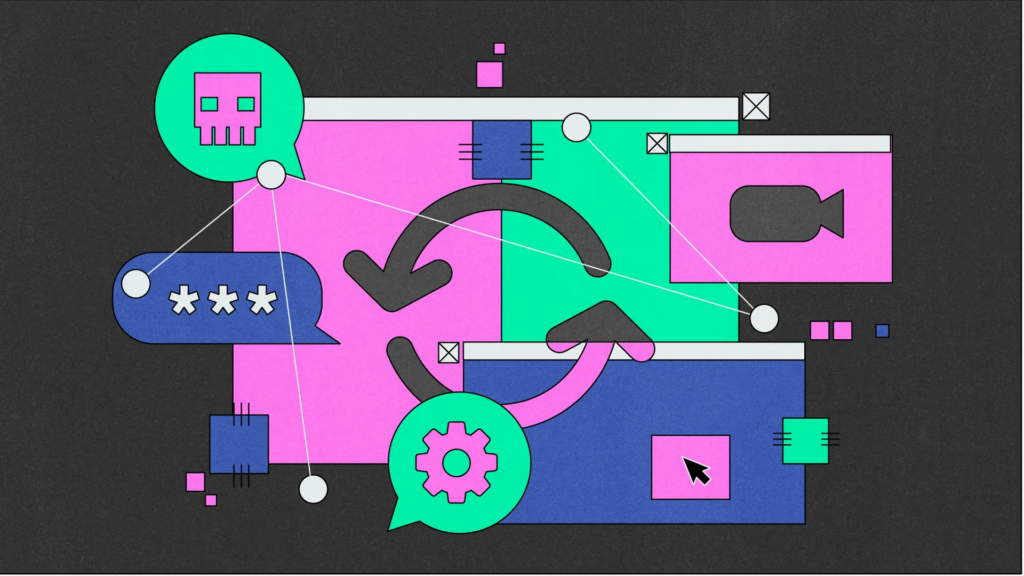Web Development Trends For 2024 The digital world is constantly evolving, and web development is no exception. In 2024, we’ll see a new wave of trends that will change how we build and interact with websites and applications. From the continued rise of artificial intelligence (AI) to the increasing focus on security and user experience, these trends have the potential to revolutionize the industry.
AI and Machine Learning Take Center Stage
AI and machine learning (ML) are no longer just buzzwords; they’re becoming deeply integrated into the fabric of web development Trends For 2024. This is evident in several ways:
- Personalization: AI algorithms can analyze user data to personalize website experiences, tailoring content and recommendations to individual preferences. Imagine a shopping website that suggests items you’ll love based on your past purchases and browsing history, or a news platform that curates articles based on your interests. This level of personalization can dramatically improve user engagement and conversion rates.
- Chatbots and virtual assistants: These AI-powered tools are becoming increasingly sophisticated, offering real-time support and answering user queries with remarkable accuracy. As they become more human-like in their interactions, chatbots will play a crucial role in streamlining customer service and providing a seamless user experience.
- Predictive analytics: By analyzing web traffic and user behavior, AI can predict future trends and patterns. This information can be used to optimize website content, marketing campaigns, and even resource allocation, leading to increased efficiency and cost savings.
Serverless Architecture Soars Higher
Serverless architecture is rapidly gaining traction, offering developers a more agile and cost-effective way to build applications. By offloading server management to cloud providers, developers can focus on writing code and deploying functions without worrying about infrastructure. This approach boasts several advantages:
- Scalability: Serverless applications can automatically scale up or down based on demand, eliminating the need for manual provisioning and reducing the risk of overspending on resources.
- Reduced costs: You only pay for the resources your application uses, leading to significant cost savings compared to traditional server-based architectures.
- Faster development: With server less, developers can focus on writing code and deploying functions, streamlining the development process and accelerating time to market.
Microservices Maintain Momentum
Microservices architecture, which involves breaking down applications into smaller, independent services, continues to be a popular trend. This approach offers several benefits:
- Agility and flexibility: Individual microservices can be developed, deployed, and scaled independently, making it easier to adapt to changing requirements and implement new features.
- Resilience: If one microservice fails, the others can continue to function, minimizing downtime and ensuring a more reliable user experience.
- Improved developer productivity: Smaller, focused services are easier to understand and maintain, leading to increased developer productivity and code quality.

GraphQL Shines as the API Hero
GraphQL is emerging as a powerful alternative to traditional RESTful APIs. It allows clients to specify the exact data they need, reducing network overhead and improving performance. This leads to several advantages:
- Reduced data fetching: Clients only request the data they need, eliminating the need to fetch unnecessary information and reducing bandwidth usage.
- Improved developer experience: GraphQL queries are more intuitive and easier to write than RESTful API calls, making development faster and more efficient.
- Enhanced user experience: GraphQL applications can deliver faster loading times and a more fluid user experience due to reduced data transfer.
Progressive Web Apps (PWAs) Take the Stage
PWAs combine the best features of websites and native applications, offering a fast, reliable, and offline-accessible experience. This makes them particularly appealing for mobile users, who often have limited bandwidth and data plans. PWAs offer several advantages:
- Improved engagement: PWAs provide a smooth and responsive experience, leading to increased user engagement and conversion rates.
- Reduced development costs: PWAs can be developed and maintained with a single codebase, saving time and resources compared to developing separate web and mobile apps.
- Offline accessibility: PWAs can cache content for offline use, ensuring a seamless experience even when internet connectivity is limited.
Edge Computing Makes its Mark
With the proliferation of Internet of Things (IoT) devices and the need for real-time processing, edge computing is emerging as a significant trend. It involves processing data closer to the source, reducing latency and improving performance for geographically distributed users.
These are just a few of the trends that are shaping the future of web development trends 2024, developers who embrace these trends will be well-positioned to build successful and innovative applications.

Beyond the Horizon: Web Development Trends For 2024 and Beyond
While the trends we’ve discussed paint a vibrant picture of 2024’s web dev landscape, there are exciting developments brewing under the surface, just waiting to burst onto the scene. Let’s explore some rising stars that could redefine the game further:
1. Web Assembly Takes Flight: This low-level language is poised to revolutionize performance by allowing near-native execution of code within web browsers. Imagine running resource-intensive applications like video editing or 3D graphics directly in your browser, without sacrificing speed or power. The possibilities for interactive experiences and real-time applications are boundless.
2. Decentralized Web (Web3) Spreads its Wings: Blockchain technology and distributed ledger systems are reshaping how we interact with the web. Expect to see a surge in decentralized applications (dApps) for finance, data storage, and even social interactions. This shift towards user-owned data and secure, peer-to-peer transactions holds immense potential for a fairer and more democratic online landscape.
3. The Rise of the Metaverse: As virtual reality (VR) and augmented reality (AR) become more accessible, the metaverse, a network of interconnected virtual worlds, is no longer a futuristic fantasy. Web developers will be instrumental in crafting immersive experiences, building virtual economies, and creating interactive spaces that blur the lines between the physical and digital realms.
4. Cybersecurity Forges a New Path: With the increasing reliance on data and interconnected systems, cybersecurity is more critical than ever. Expect to see advancements in AI-powered threat detection, blockchain-based security solutions, and privacy-preserving technologies that empower users to control their online footprint.
5. Voice Interfaces Take Center Stage: As voice assistants become more ubiquitous, voice-enabled websites and applications will gain prominence. Developers will need to master the art of conversational UI/UX design, ensuring smooth user interactions through natural language processing and context-aware responses.
6. Quantum Computing Makes its Debut: While still in its infancy, quantum computing’s potential to revolutionize cryptography, optimization problems, and scientific simulations is undeniable. Web developers may leverage quantum-resistant algorithms and explore novel applications on the nascent quantum web.
Remember, these are just a glimpse into the vast potential of the web development horizon. As technology evolves at breakneck speed, staying informed and open to new ideas is crucial. By embracing these emerging trends and pushing the boundaries of innovation, developers can shape the future of the web and create experiences that are not only functional but also transformative.
This revised version further elaborates on the existing trends and introduces five additional trends that hold significant promise for the future of web development. By offering a broader perspective and highlighting the potential impact of these emerging technologies, it aims to inspire and equip developers to actively participate in shaping the future of the web.
Read More : “Unlocking Success: 7 Essential Resources Every Developer Should Harness”





